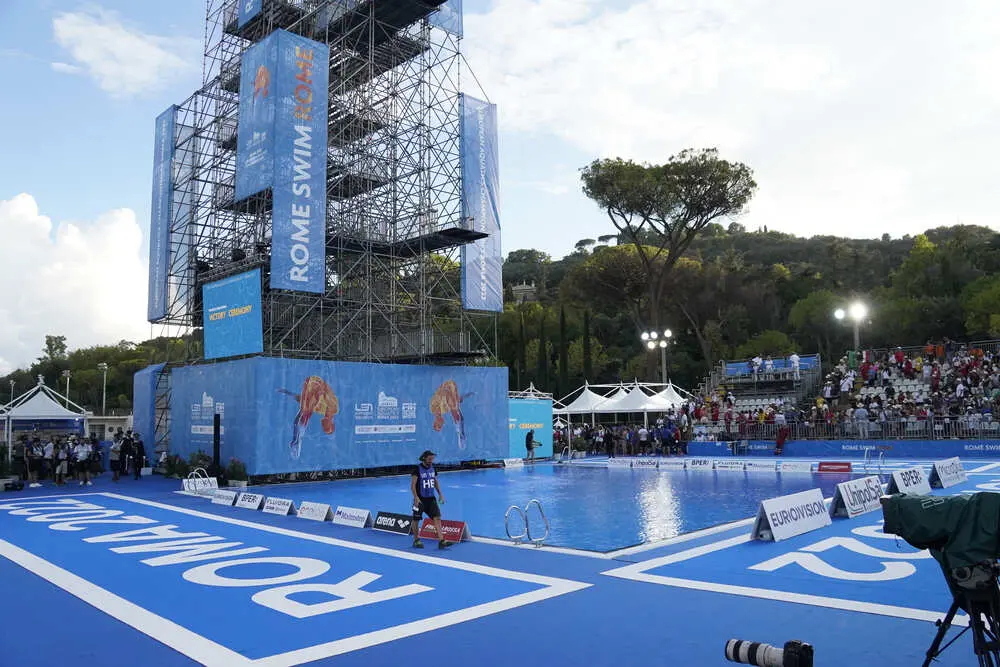Where precision meets adrenaline. The art, science, and architecture of high diving pools: Exploring the depths, heights, and thrills of this spectacular aquatic sport.
In the realm of aquatic sports, few competitions combine adrenaline, precision, and sheer excitement like high diving. These dazzling athletes, often referred to as «high divers,» gracefully traverse the skies from astonishing heights before executing a mesmerising plunge into the pool beneath them. High diving pools are the epicentres of this thrilling sport, designed to push the boundaries of human potential.
In this article, we will delve into the intriguing world of high diving pools, exploring their design, construction, safety protocols, and necessary standards.
Dive deeper with the eBook
What is high diving?
High diving is a daring discipline in which athletes, known as «high divers,» plunge into water from considerable heights. This sport can be practised in both natural environments and purpose-built high diving pools.
Though its roots trace back to ancient civilizations, such as Rome, high diving didn’t gain widespread recognition until the 20th century. It became an official Olympic sport in 1904, continuing to evolve and captivate audiences with its awe-inspiring feats.
High diving shares fundamental similarities with platform diving, but two key distinctions set them apart: high divers enter the water feet first, and they jump from greater heights. World Aquatics has set official heights of 20 metres for women and 27 metres for men in high diving competitions.
High diving can be executed from cliffs, artificial platforms, or into various bodies of water, including the sea, lakes, rivers, or custom-built pools, each complying with specific features and safety requirements.

The anatomy of high diving pools
High diving pools differ significantly from conventional swimming pools. They are purpose-built to accommodate extreme dives, with meticulous attention to diver safety. These pools, which can be permanent or temporary structures, typically feature diving towers with diving platforms and springboards.
The high diving discipline is strictly regulated by the World Aquatics Federation, and the facilities must adhere to rigorous standards and regulations:
- Shape: Permanent artificial pools are preferably rectangular, while temporary pools can be round. The pool deck’s colour should be grey for better differentiation from the water.
- Size: Rectangular high diving pools must have a minimum width of 17.50 metres and a length of at least 14 metres from the plummet to the front walls. Round pools should have a minimum diameter of 17 metres.
- Depth: The minimum depth is 5.80 metres, with exceptions for legacy pools built before December 2017, which can be 5 metres deep.
- High Diving Platforms: These platforms must be rigid, 2 metres wide and 5 metres long, with anti-slip surfaces. They must include 1.0-meter high handrails and be made of approved materials like concrete or steel. Movement and oscillation of the diving tower are limited for safety.
- Temperature: In open water venues, the water temperature should not fall below 18°C, and in venues with artificial pools, it should ideally be maintained at 26°C or higher. Strong horizontal water sprays and scuba divers can provide additional surface agitation and visibility for athletes. The water spray should not be positioned higher than 1.50 metres above the water level.
External environmental factors, such as wind speed and storms, can influence competition decisions. If wind exceeds 40 km/h, judges may halt the competition. If a storm approaches within a 3km radius, the event will be temporarily suspended.
Design and construction of high diving pools
High diving pools are often used exclusively for specific and temporary competition events. This unique requirement has led to the development of modular panel systems, such as Skypool, which are an ideal choice for creating temporary pools that meet all the size requirements for official World Aquatics competitions.
These modular systems offer a quick and reliable means of constructing pools with the precise dimensions and features demanded by the sport. Whether for international championships or local competitions, these pools provide the necessary infrastructure, ensuring athletes can perform at their best while adhering to safety standards.
Celebrating high diving pools: Where thrills take flight
High diving pools are a testament to the human spirit’s ability to push boundaries, blending athleticism, precision, and bravery in a breathtaking display. As the sport continues to evolve and captivate audiences, the dedicated design, construction, and safety measures surrounding these pools play an indispensable role in making high diving a true spectacle of extreme aquatics. The benefit of the modular construction of these high diving pools is their flexibility, allowing event organisers to reuse the equipment again and again. Contact Fluidra today to arrange a consultation.
